NOTE: An earlier version of this article was posted on the author’s Medium blog, and can be read here.
UPDATE: As of March 24th, BUY IN has secured 100% of its funding via its Seed&Spark crowdfunding campaign, which has now concluded. The film can now be seen on Undead Burrito Productions’ YouTube channel, and at the embedded link located at the end of this article.
Money, and the desire for enough of it to help sustain one’s daily life, motivates some people to take chances on supposedly legitimate-looking financial schemes that only end up costing investors more than currency. Despite the high risk/zero reward ratio of such business scams, those who make a living by conning innocent people out of their dough thrive on wielding total power over their unsuspecting customers. Yet as the new psychological horror short film Buy In shows, money isn’t the only thing that’s at risk for those on both sides of that deal.
Directed and co-executive produced by Bri Castellini (Brains, Sam and Pat are Depressed, and her previous short film Ace and Anxious) and co-written by Castellini and film co-star/co-executive producer Colin Hinckley, Buy In is a claustrophobic thriller that, via its compelling plot line and the actions of its three characters, also analyzes how greed corrupts the opportunistic and victimizes the vulnerable.
Buy In co-stars Colin Hinckley (Carl in season 2 of Brains, Kevin in Ace and Anxious, Thomas in Sam and Pat are Depressed) as Roger, a lonely traveler whose night in a cramped hotel room becomes a fateful encounter with a cunning salesman (Marc, played by Marshall Taylor Thurman – Damian in Brains, Dave in Ace and Anxious) and an unexpected new player in Sam (Mae Mitchell). Their meeting gradually turns from a friendly sales pitch into a terrifying trap that puts their futures in as much danger as their money is.
Structured exactly like a classic “pyramid scheme”, Buy In‘s fundraising campaign offers contributors who recruit other contributors higher status, rising through the ranks of the Buy In on Seed&Spark leader board, exclusively for bragging rights. The more people you recruit to pledge money, the higher your ranking. Contributors can also pledge specific amounts of money to claim a variety of incentives.
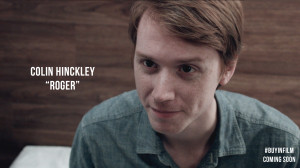 These goodies range from producer credit to an exclusive pre-release cut of Buy In, and everything in between – depending on how much money they give to the campaign. A further explanation of the film’s campaign is offered by Castellini and Hinckley at the video embedded below this article.
These goodies range from producer credit to an exclusive pre-release cut of Buy In, and everything in between – depending on how much money they give to the campaign. A further explanation of the film’s campaign is offered by Castellini and Hinckley at the video embedded below this article.
Buy In‘s Seed&Spark endeavor will help Castellini and Hinckley compensate their collaborators for their tremendous work on the project. The extra cash will also provide Castellini and Hinckley financial security as they develop future short film and web series concepts. Overall, it’s a fitting reward for the two filmmakers as they seek to share Buy In‘s haunting story of how money is all too often the root of all evil; a story Castellini and Hinckley first plotted over four years ago.
SR: What is Buy In about?
Bri Castellini (director/co-writer/co-executive producer, Buy In): For me, especially as the director, I saw this film as an exploration of power, control, and expectation. This was my first true drama that I’ve worked on (written or directed) and getting to work with Colin and Marshall and Mae as they all were stuck in this tiny, dark little room vying for the upper hand, for the moral high ground, and to be the one that gets to keep their secrets safe, and that exploration (not necessarily the resolution) is really what Buy In was about for me.
Colin Hinckley (“Roger”, co-writer/co-executive producer, Buy In): Buy In, for me, is a horror movie about capitalism. It’s a story about power, money, desperation, lies, and, in its own strange way, hope. It’s a microcosm of one facet of our society in this tiny little pressure cooker of a room. Alliances shift at a moment’s notice, power is taken, (and) unfathomable forces are at work. For me, it’s a story about how money shapes our lives in the most insidious and frightening ways, and how the people who take advantage of that are the most frightening of all.
SR: What inspired you to make Buy In?
Bri: Despite two seasons of Brains, my zombie apocalypse web series, I’ve never really done a horror project, not a true horror, and certainly not a psychological horror, and I knew Colin was really into it as a genre. I don’t remember who had the idea first to collaborate, but at the end of Brains season 2 and Ace and Anxious, Colin and I had a really good working rhythm and wanted to keep the ball rolling so we decided to try and co-write a horror film that he’d star in and I’d direct that wouldn’t be too much of a production nightmare but looked distinct from the other things we’d done.
Colin: We knew we wanted to work together again, and I think I got really excited about doing a horror project and I knew Bri would be game. It started with us just saying, okay, we know we want to make something together, and then going from there. It was all very organic and I think it grew naturally from our interests and sensibilities.
SR: Besides the horror genre, how (if at all) did your own real life experiences influence the creation of this film?
Colin: Well, I’ve long felt that we live in a fundamentally unjust society. Like a lot of people my age, I’m up to my eyeballs in student loan debt, but despite the fact that I have this degree and I’m a relatively smart person and a hard worker, I’ve struggled to make ends meet since graduation. I, like many people, “did the right thing” and sought a good education and moved to a city.
Since I work in the arts, it could be expected that it’s quite a bit harder than a traditional career path (although that should be an entire separate conversation), but I think I became really motivated by this thinking once I saw my friends who took more traditional career paths were also struggling.
Everyone who’s not Jeff Bezos or Mark Zuckerberg is struggling. So I think some of how Buy In came about was this latent frustration and fear surrounding the way money motivates everything in modern life, and how viciously toxic that is for society.
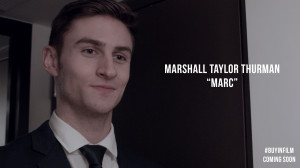 SR: In what ways did your past work on Brains and Ace And Anxious prepare you for making Buy In?
SR: In what ways did your past work on Brains and Ace And Anxious prepare you for making Buy In?
Bri: The big thing that our previous work gave us was relationships. We hired entirely from people we’d already worked with. Sound and cinematography were the same guys (albeit with better equipment this time around) for Ace and Anxious and Buy In – Tai Collins and Brandon Smalls, respectively. Since I’d worked as the director (with) Colin and Marshall (separately and together), I feel like we all had a good sense of each other’s strengths and priorities and were a lot more efficient as a team this time around.
Colin: I definitely just had more confidence coming into the project. Part of that was that Bri and I wrote the script together, so I knew it inside and out, but also that I just trusted Bri implicitly after working with her so often. Being co-writer and (executive producer of Buy In) was a new experience, but because I knew and trusted everyone on set, I felt like I could come in with those roles without fear of messing it up.
SR: What was the production process like for it?
Bri: We got a hotel room, loaded all the equipment into the shower (the only consistently unoccupied place in the tiny little room), covered the window so the lighting wouldn’t change, and basically stayed confined together for three solid days (while) slowly going insane, which I think worked for the tone and subject matter of the film.
Colin: Ditto what Bri said. I think if we had had even one more person on set, it would have all fallen apart. Don’t get me wrong, it was great, and the whole process was really energizing and gratifying. But the space was really confined, and the hotel didn’t know we were filming there, so there was this (illicit) feeling that made it simultaneously more fun and stressful. The margin for error was razor thin, because if we didn’t get everything we needed, getting back into the space would have blown out our budget, and there would have been no guarantee we would get the same room.
SR: Although the film has finished production and has screened on the festival circuit, you’re using crowdfunding to recoup the debts you incurred in making Buy In. Why is that, and how will people who contribute to the campaign help make the film’s digital debut possible?
Bri: So for us, the crowdfunding campaign is more marketing than it is fundraising, since as you said we’ve already completed production. We want to make sure people know about the film before we release it for wider audiences, and have a good association with it through our antics. We also wanted to show our cast and crew appreciation for their hard, entirely volunteer work, because they did such an incredible job and they are the reason it has had as much success as it’s already had.
Colin: I wanted to make sure everyone involved got the pay they deserved. For a film about the insidious nature of capitalism, it didn’t sit well with either of us that we would be working with what amounted to free labor, and it just kind of worked out that the themes of the film dovetailed really nicely with the structure of crowdfunding. When we realized we could make a campaign that was structured as a pyramid scheme, it just fell into place.
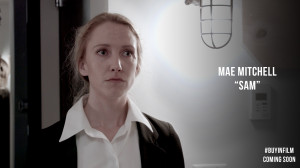 SR: Describe how the campaign’s overall structure will benefit both its donors and the release of the film overall.
SR: Describe how the campaign’s overall structure will benefit both its donors and the release of the film overall.
Bri: A big thing for us, especially since this is marketing more than it’s fundraising “proper,” is that we want this campaign to be fun: fun to follow, fun to pledge to, fun to be a part of. So we have a bunch of really weird, on-theme incentives. We have a bunch of horror film recommendations from Colin scheduled to go out, we have behind-the-scenes breakdowns from me scheduled as well, and the pitch video…I mean, come on.
We drink milk out of wine glasses! What more could you want? We just wanted to make an impression, build credibility for ourselves as creators (and creators of this specific film), and I think we’ve done both of those things. I guess we’ll see by the end of the campaign!
Colin: There are so many (campaigns) that just feel like work for everyone involved. It’s a slog to do the actual work of raising money, it’s tiring for people to constantly hear about it, and it’s exhausting for creators and collaborators to work on something that isn’t traditionally creative. So I think we really deliberately wanted to do something that didn’t feel like work, and that would also highlight the themes of the film, but from a different angle.
The thing about multi-level marketing schemes is that they are incredibly enticing for people; they offer easy solutions and make the process look fun. So by satirizing that really insidious system in a way that was upfront about our goals, it not only boosts awareness of the film and helps us reach our fundraising goal faster, but it also draws attention to this problem that disproportionately affects people who are economically disadvantaged.

Behind the scenes of BUY IN with actors Marshall Taylor Thurman and Mae Mitchell.
SR: In what ways (if any) will the campaign’s funding help you to make more projects in the future?
Bri: A well-run crowdfunding campaign does a couple of things outside of strictly funding the current project – it helps build credibility that we as creators are serious about our craft (but not too serious), it helps us build an audience that has been proven to care at least a little bit about the work we do, and we’ll be slightly less broke going into whatever the next thing is, which is a big deal! Haven’t you heard, capitalism is a prison!
Colin: Similarly, it shows to anyone who might be interested in our work (big money investors, hit us up!) that we can walk and chew gum at the same time. We can make good art and we can generate enthusiasm for that art. It also helps in the sense that we’ll have a better idea of how to operate the next one. If it’s successful, I think it’ll open up the idea of what a crowdfunding campaign can be for other people who might be dreading the process.
NOTE: Castellini and Hinckley say that Buy In will be closed-captioned upon its release.
Watch Buy In here:
Contribute to Buy In‘s crowdfunding campaign on Seed&Spark here:
http://seedandspark.com/fund/buy-in
Find out more about the campaign in this video:

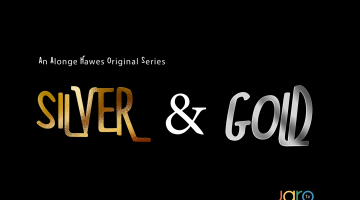

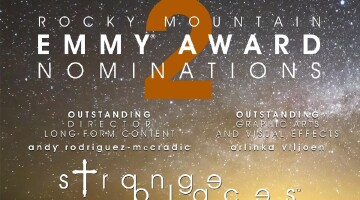

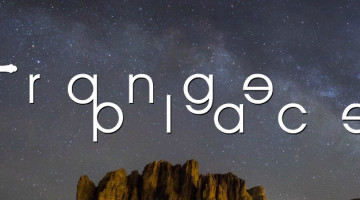

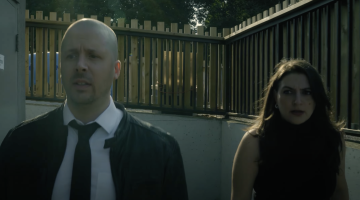
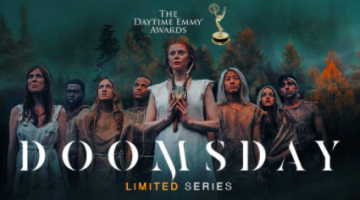

No Comment